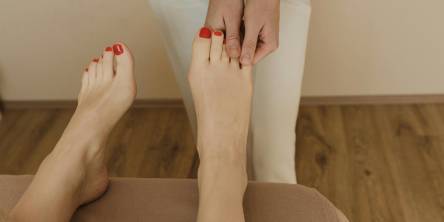Everything You Need to Know About Sports Shoulder Injuries

When you think about sports injuries, you generally think of football, basketball, or soccer. All three of these sports demand players to put their bodies on the line regularly. Contact is widespread, and tackling is an essential component of the game of football.
However, when it comes to typical sports injuries, just one has a repair surgery named after a player. The Tommy John surgery, named after a Los Angeles Dodgers pitcher, is performed to treat one of the most common sports injuries: a ruptured ulnar collateral ligament in the elbow.
When baseball players aren't having Tommy John surgery to heal their elbows, they're usually hurting somewhere else. Soft tissue injuries in the major leagues are on the rise and show no signs of abating. Baseball players put their bodies through a lot of abrupt activity –– pitchers whip balls at speeds of 90 miles per hour, and sluggers swing for the fences. Shoulder injuries are understandably common.
Are you or someone in your family experiencing shoulder pain as a result of baseball or another sport? If this is the case, please consult your doctor as soon as possible.
Common sports shoulder injuries
SLAP tears
The abbreviation SLAP stands for superior labrum anterior and posterior. The labrum is a thick ring of tissue that provides support to the shoulder joint. It's located at the intersection of your upper arm bone, collar bone, and shoulder blade, and it performs an important function in connecting the arm bone and shoulder blade. SLAP rips are frequently associated with shoulder dislocation.
Overuse can cause the labrum to tear, which can happen to baseball players in any position. Pitchers, on the other hand, are more prone to SLAP rips caused by quick or strong arm movement above the level of the shoulder.
Rotator cuff injuries
The rotator cuff is a group of muscles and tendons that surrounds the shoulder blade, effectively drawing the upper arm bone into the cup of the shoulder blade where the labrum rests between the upper arm bone and the shoulder blade. When you raise your arm above your head, this is the primary muscle group at work.
When your rotator cuff tears, you may experience difficulty reaching behind your back and a dull soreness deep in your shoulder. Sleeping might be challenging due to the location and type of pain. Rotator cuff injuries, including SLAP tears, are frequently caused by repetitive shoulder motions. The rotator cuff deteriorates over time and affects senior league players more than small leaguers.
Shoulder tendonitis
Inflammation of the rotator cuff or biceps tendon causes shoulder tendonitis. When the rotator cuff or biceps tendons are frequently squeezed by other tissues in the shoulder, it causes mild to severe inflammation. Shoulder tendonitis, like SLAP rips and rotator cuff injuries, begins with and is often exacerbated by repetitive actions that place the arm above the shoulder.
Shoulder tendonitis causes pain or tenderness in the shoulder and makes it difficult to hold one's arm in certain positions. Tendonitis is usually simple to cure, especially if detected early. Rest and steroid injections will help your shoulder feel better.
When you’ll feel better after a shoulder injury?
Injuries happen all the time; however, if ligaments, bones, and tendons are injured, some patients will find that they can heal naturally. Some people may require biologics, such as platelet-rich plasma (PRP) injections. Other patients with severe injuries (dislocation, popping in and out, ruptured tendons) are advised to have surgery. In general, bone injuries recover slightly faster than soft tissue injuries.
Patients with a normal collarbone fracture that requires plating, for example, feel much better fairly quickly. The healing process takes longer, but the bone will mend in two to four months. The patient may feel recovered and ready to go, but X-rays show that it takes longer to heal. Rotator cuff injuries take anywhere from six months to a year to fully heal.
If surgery is necessary, how long will take the recovery time?
Surgery is typically used as a last resort in treatment. Every patient has unique requirements. Once the doctor has determined the nature of the problem, they can determine whether surgical or nonsurgical treatment is preferable.
Around 20% of people require surgery, and those who do, do it for a good reason. However, surgical outcomes vary depending on the problem.
A common fixed fracture can feel better in days or weeks. A patient with a shoulder injury may see significant relief after three months, but a patient with a rotator cuff rupture may experience significant benefits after six months to a year.
How to speed up healing after surgery?
Rehabilitation is critical to the healing process. Recovery is delayed and unpredictable without it. Surgery moves things anatomically, but patients should take supplements, such as vitamin D, and adjust their diet to recuperate faster. Biologics and platelet-rich plasma (PRP) therapy, as well as other derived cells, may be prescribed by doctors on occasion to promote speedier healing.
Similar Articles
Knee pain affects millions of people around the world. It can make daily activities difficult and impact your quality of life. Knee discomfort can be caused by injuries, chronic conditions, or overuse.
If your knees have recently started sounding like a bowl of Rice Krispies (snap, crackle, pop!) every time you stand up, congratulations — you're officially living the adult experience.
Search engine optimization (SEO) may help physical therapists improve their online exposure and drive more visitors to their website.
You're sitting at home with two completely different treatment plans from two doctors you trust.
When conservative therapy fails, surgery may be required to alleviate chronic foot or ankle discomfort.
Your body changes with time - muscles and bones shift, ligaments loosen, and circulation may slow. Unfortunately, the aging process has an impact on our feet as well.
Back problems aren't just discomfort or temporary back pain. Many of them can be extremely dangerous and lead to serious complications if you don't seek medical attention on time.
Sciatica is a condition in which the sciatic nerve, the longest nerve in the human body, becomes irritated or pinched
Irritable bowel syndrome (IBS) is a dysfunction of the gastrointestinal tract that manifests as abdominal pain, bloating, flatulence, and intestinal discomfort (constipation, diarrhea, or a combination of both.









